Chambery (France, Savoie) - Cute Town In The Mountains, A City Of Contrasts
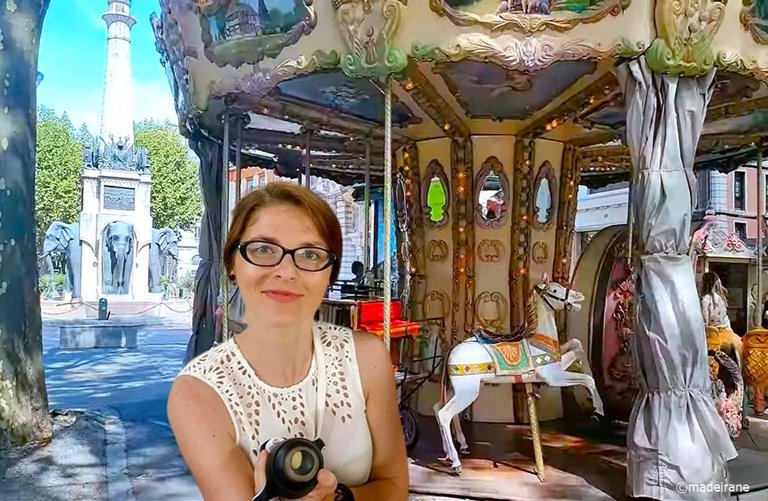
Last weekend I was organizing photos on my computer and found quite a few folders with photos from my trip. And it's a pity to throw away, and it seems unnecessary information, because there are many images that were photographed because they are simply beautiful, but they do not have representatives of my family, so the question is whether it is worth loading the computer storage with them. Therefore, the easiest thing is to simply describe those trips, publish the most beautiful photos and simply delete all the others.
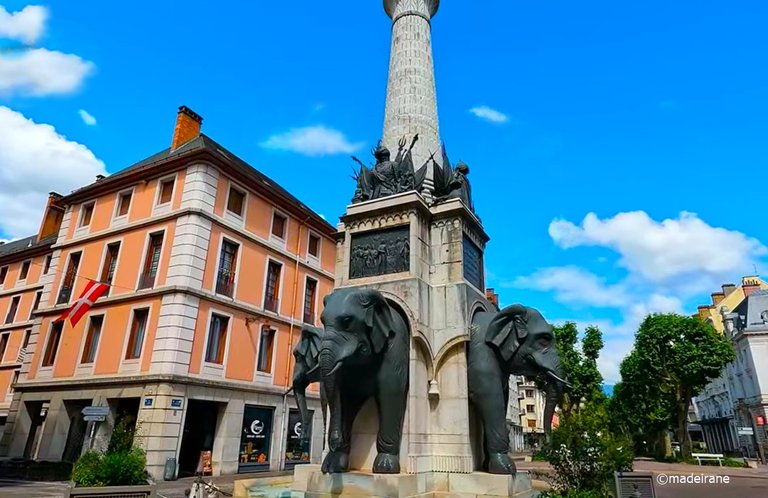
So, a bus tour to Savoy, France. Today - about the city of Chambery. My beloved France, which I love in all its manifestations. I have written so much about it, and I have been there many times, but I have an unbearable desire to visit it again and go where my foot has not yet stepped and where I have stepped too. In this country there are cities that are very memorable and to which I want to return.

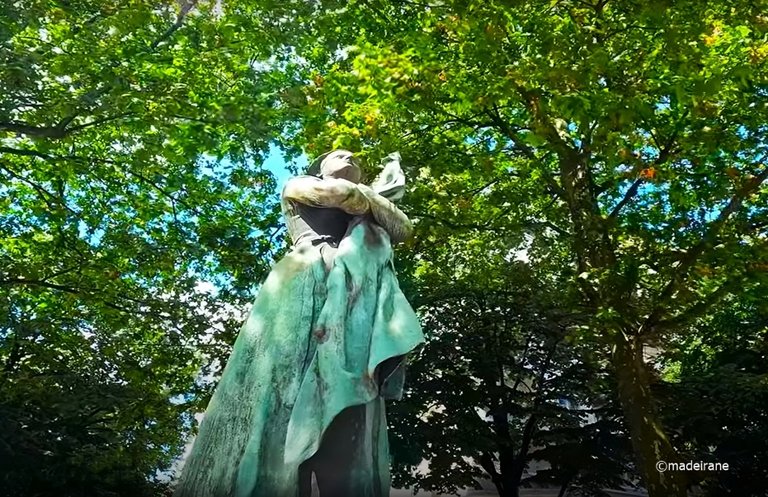
Of course, Provence is always my favorite, but I never forget about the mountains. I have already written a lot about Provence, but never about the mountain region of Savoie, about castles, cities and amazing excursions. I guess everyone has heard of Chambéry city since there are ski resorts right there.
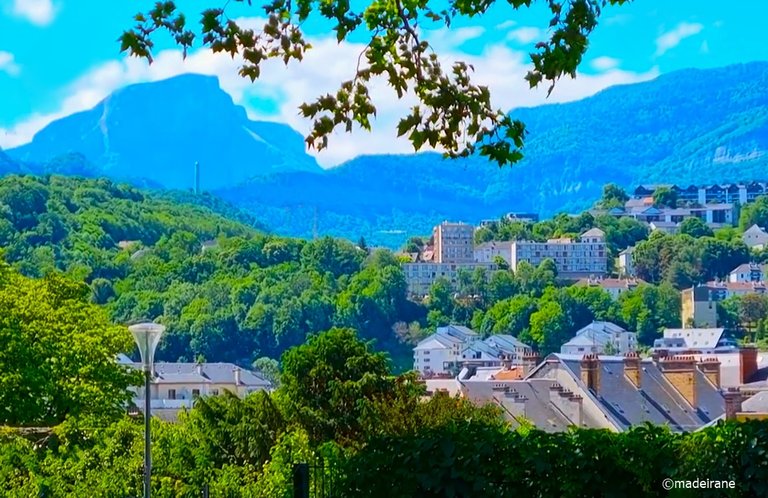
You must admit that cities that are located in the mountains have their own special charm. Take, for example, Grenoble city. A city that has no special attractions, where many students live, which is a scientific center - all the same, this city is very interesting. And take the city of Annecy, such gorgeous views of the lake and mountains, and the city itself is very nice, such a French Venice in the mountains.
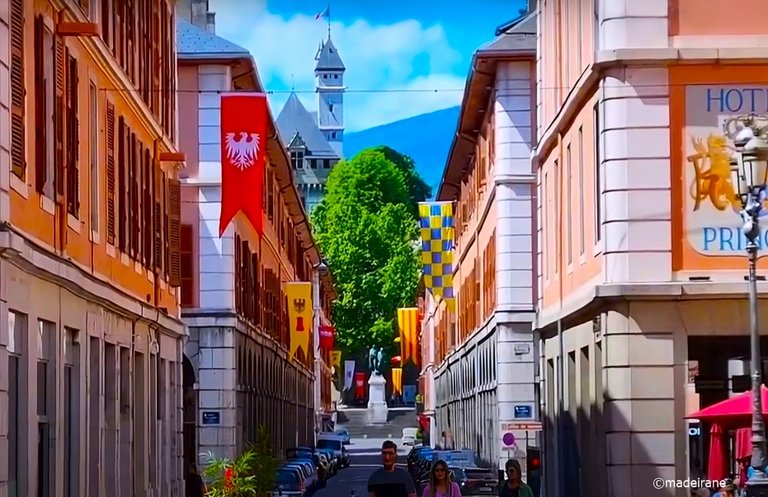
And now the city of Chambéry has been added to the list of my favorite cities, which I will talk about today. Of course, all the cities in the mountains have a beautiful panorama and if you look closely, you will see the mountains against the backdrop of the city.
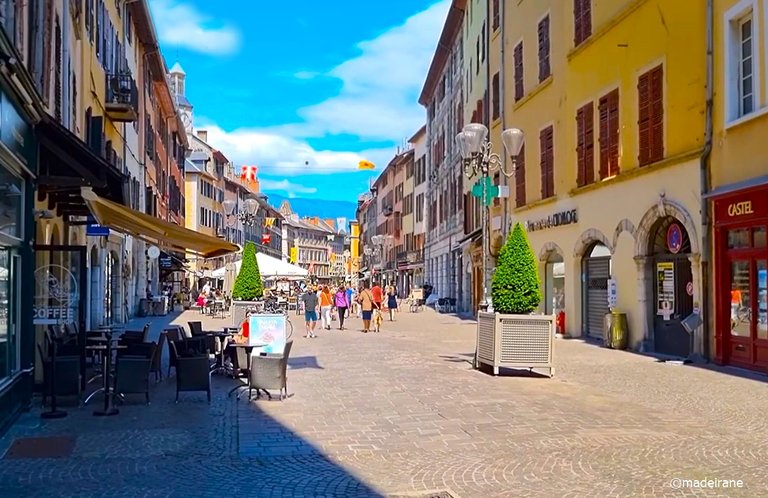
Chambéry is still lovingly called by locals the crossroads of the Alps, since it was in this city that the ancient trade routes from Italy, France, Burgundy and Switzerland used to intersect. And thanks to this, the city always prospered and grew.
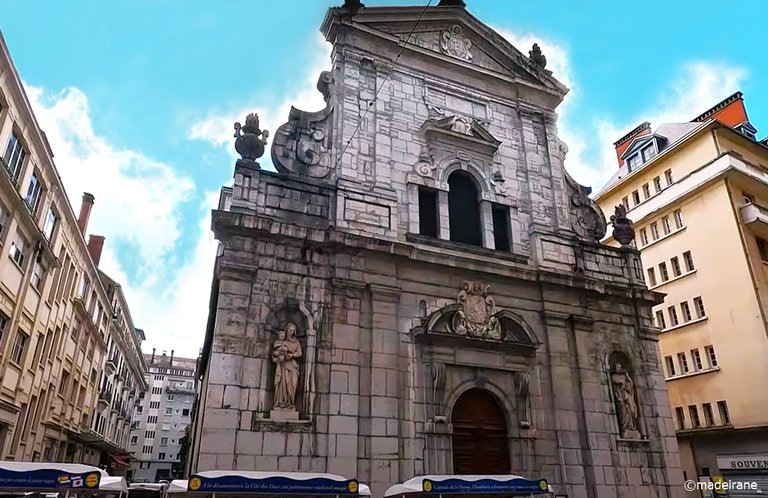
Today, Chambery has a population of over 60,000 people, so it can't be called small. The city has its own university, so there are also many students here. And also its own airport, which not every city in the mountains can boast of. In general, when I travel around France, I have a complete feeling of "travelers" about this nation. On their days off, they constantly travel to neighboring cities where some events are held.
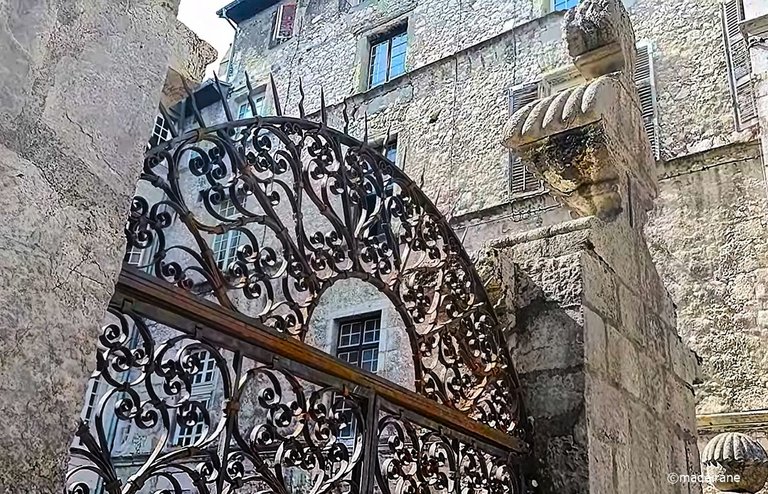
Of course, on the one hand, it is very unusual to see so many people in a small town. On the other hand, it was interesting to observe the life of the city in which the market opened. It was interesting to watch the French and how they sell a lot of unnecessary things. But it was a pity that this crowd prevented us from admiring the beauty of this city. And the city is really beautiful.
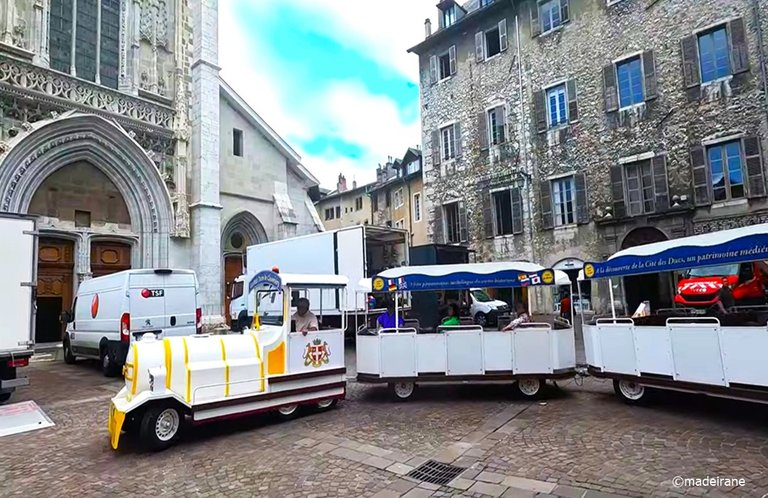
The history of Chambery is closely linked with the Principality of Savoy, as it was once their main city. And today, Chambéry is the main city of Savoy. The first human settlement on this site dates back to the Neolithic era and in Roman times there was a city here. But still, the real history of this city begins in the Middle Ages, when the Principality of Savoy refused to be part of France, and they had an insurmountable struggle for territory. That is why the city repeatedly changed hosts from Savoy to France and back. And even the Italians were ably to conquer this city. Here I will not go into details.
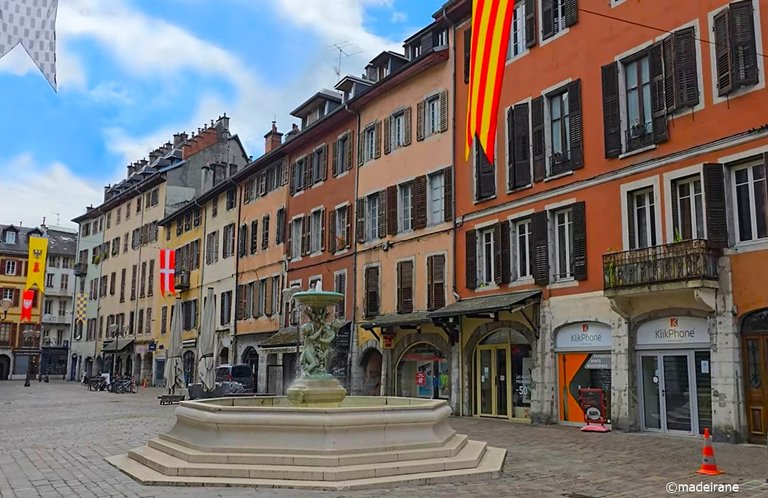
I just want to show you this lovely town in the mountains. And this is one of the main attractions of the city, a fountain with elephants. By the way, locals made fun of it for a long time when it was built. But today it is already a calling card of the city.
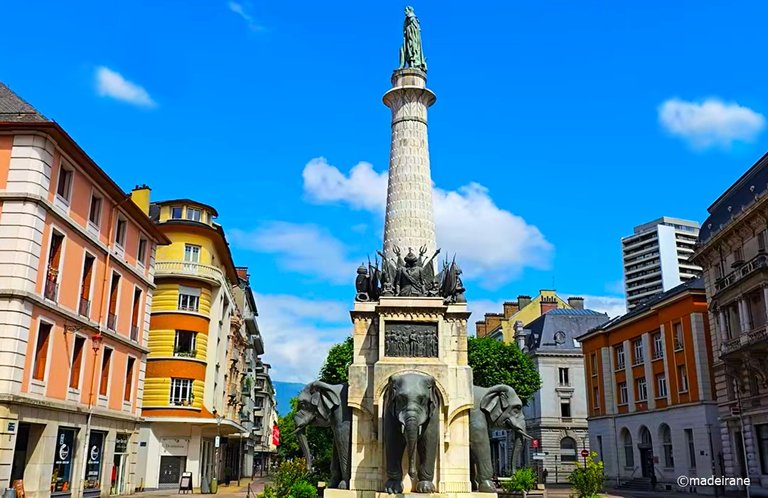
It's a beautiful composition of a column with fountain and some sculptures. The elephants are arranged in the form of a traditional Savoyard cross, and in fact they only have the front halves of their bodies, for which the Savoyards call this complex "four without asses".
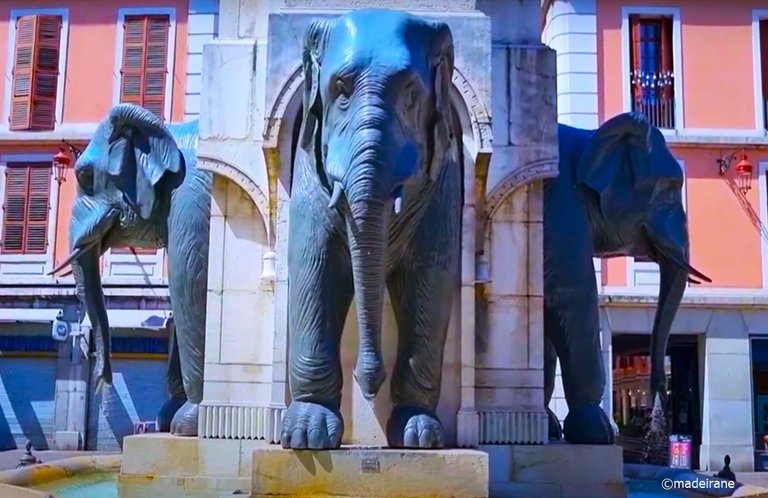
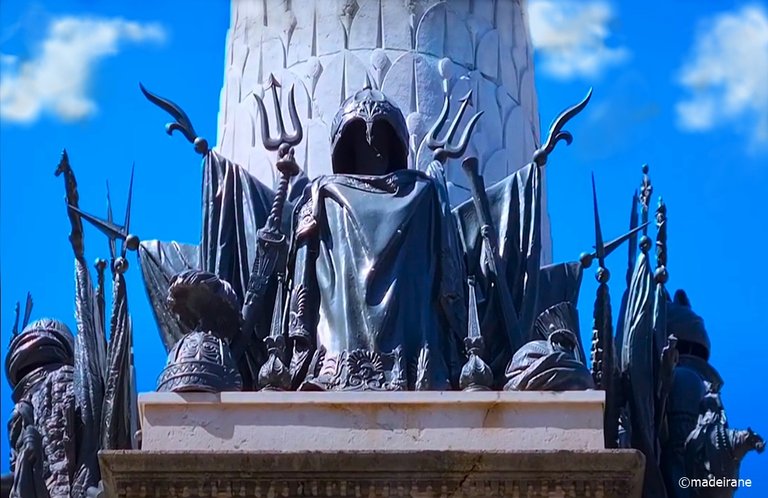
The Count de Boigne also took an active part in giving the old quarters of Chambéry an attractive appearance. In particular, this very beautiful straight street was laid out, which now bears his name, linking the Place des Elephants with the Castle of the Dukes of Savoy, a theater was built, etc.
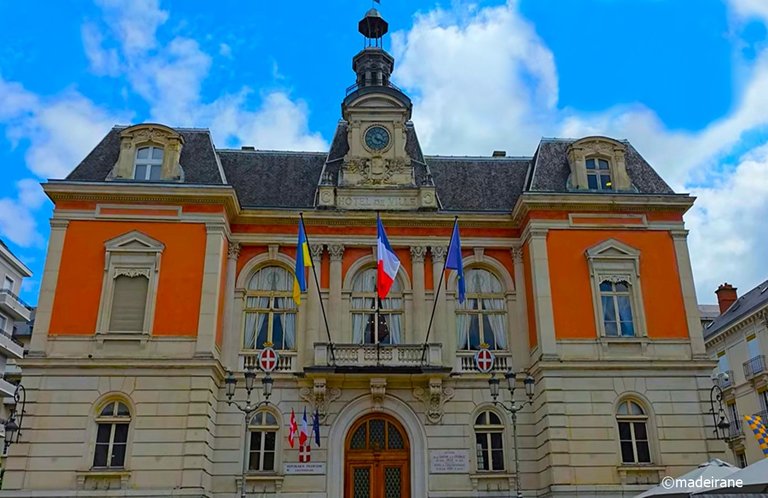
Since the city changed its citizenship many times, passing from hand to hand between the Italians, the Spanish, the French, this has been reflected in the architecture. Even now, the influence of Italy is very strongly felt in Chambéry. The narrow, winding streets of the old town suddenly open onto spacious rectangular squares. The old town makes a very strong impression.
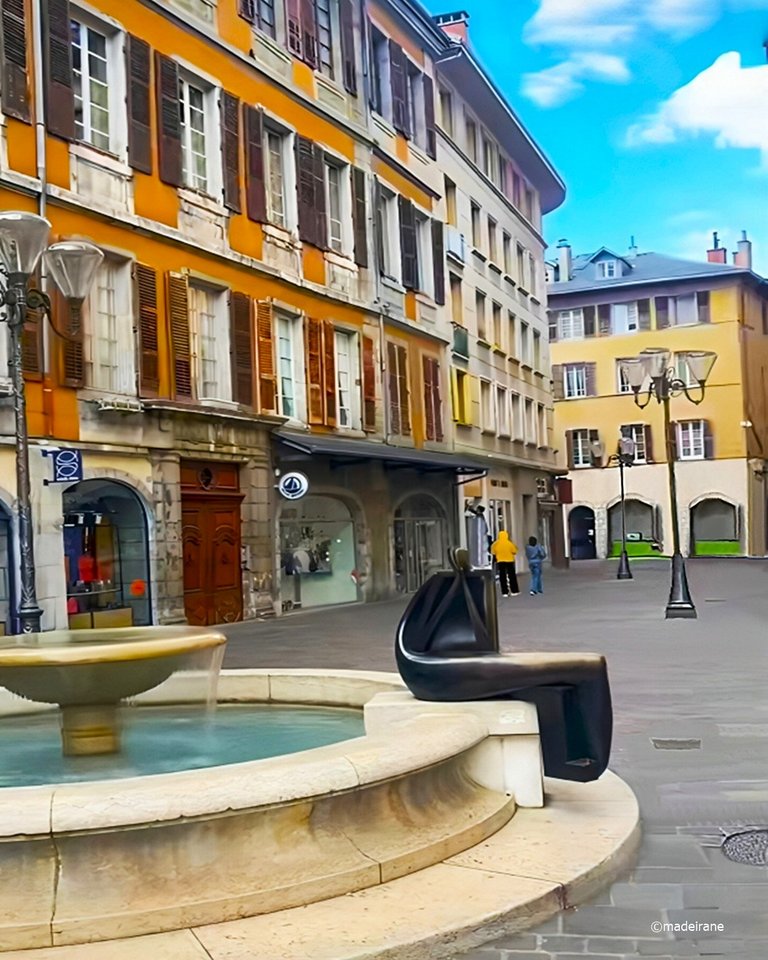
Another attraction of the city is the castle of the Counts of Savoy, which dates back to the 14th century. It was rebuilt several times. This is a building with many towers, courtyards, passages. Now part of the castle is occupied by local authorities. The castle is so integrated into the urban landscape, or rather the town so tightly embraced the castle, that it is difficult to photograph it.
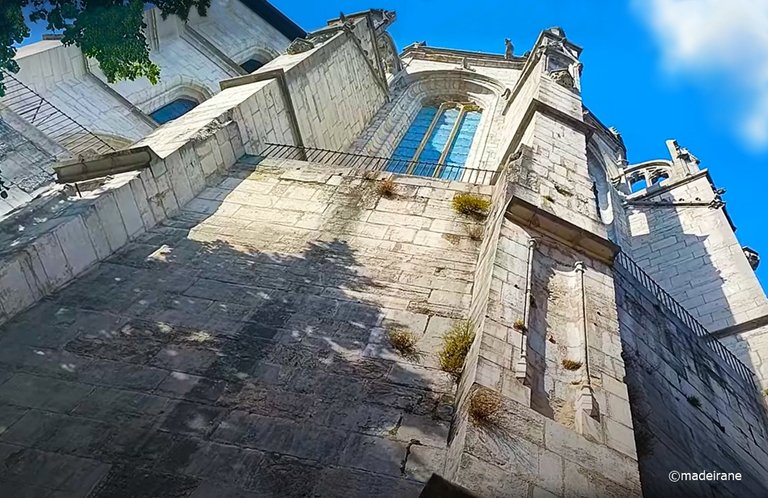
In the teritory of the castle, there is the church of Sainte-Chapelle, that was built in the early 15th century. After a big fire, the Sainte-Chapelle was closed for a long time for restoration. Inside you can see the wonderful stained-glass windows of the 16th century.
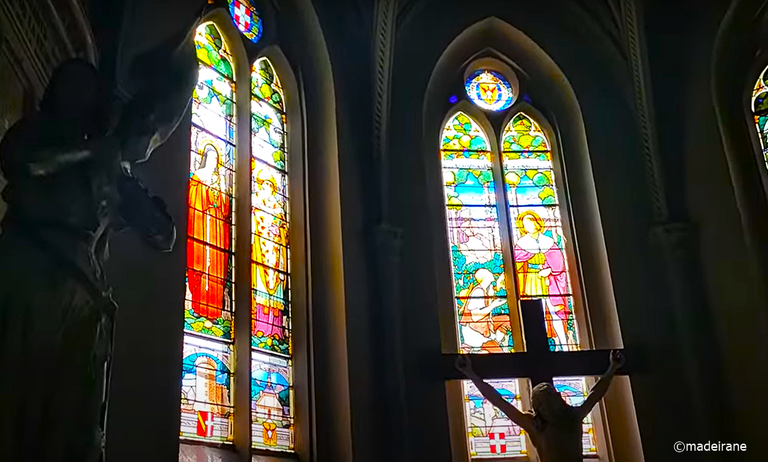
"If there is a city where you can feel the softness of life with pleasant and proven trade, it is Chambéry," said Jean-Jacques Rousseau, who spent more than 10 years of his life here and here he wrote his bestseller - a novel in letters "Julie, or the New Heloise". The novel was dedicated to his patroness and lover, Louise-Eléonore de Warens, with whom he lived for several years on the outskirts of Chambéry, on the Charmette estate, where his house-museum is now located.
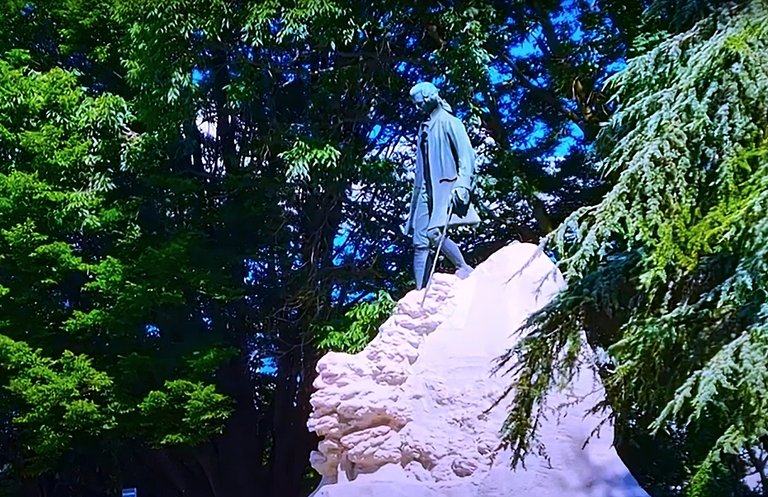
In the small park of J.J. Rousseau, a monument was erected, and Madame de Warens is buried here, in the local cemetery. In fact, J.J. Rousseau is looking at you in Chambéry from everywhere, from the walls, from street banners, from the covers of printed publications, etc.
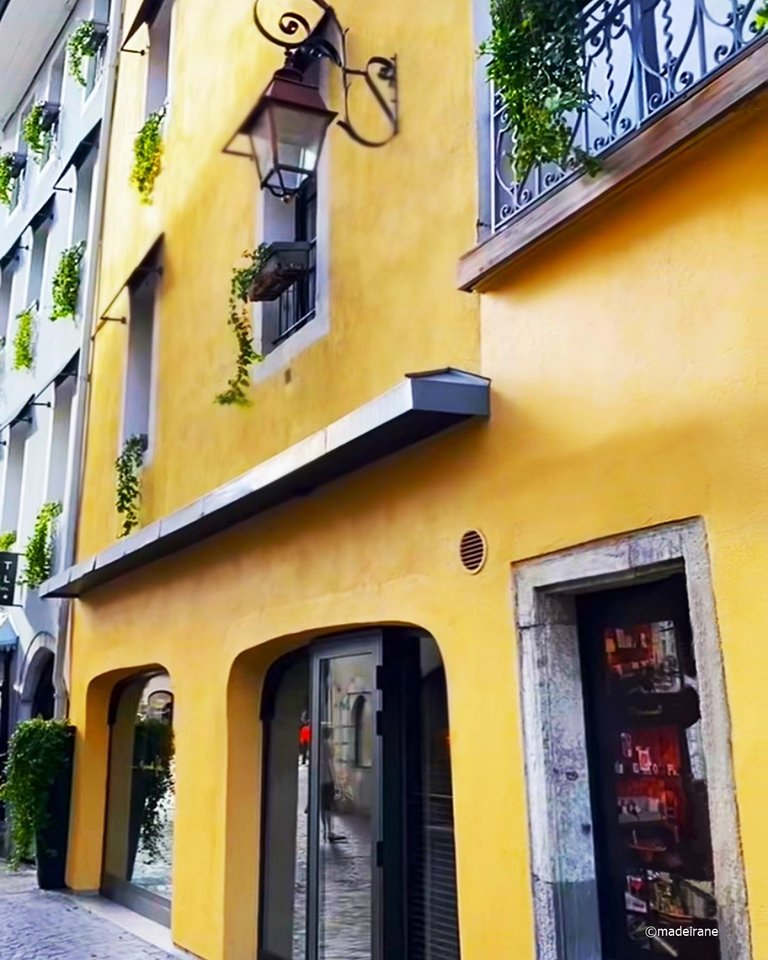
In Chambéry, in some incredible way, in complete harmony, both outwardly neglected houses and bright, toy-like buildings and entire streets untouched by the hand of a restorer and streets with boutiques and restaurants coexist. Here, the Middle Ages peacefully coexist with the Renaissance for Chambéry, the 19th century, in the time of the Count de Boigne. A sweet, glorious town!!!
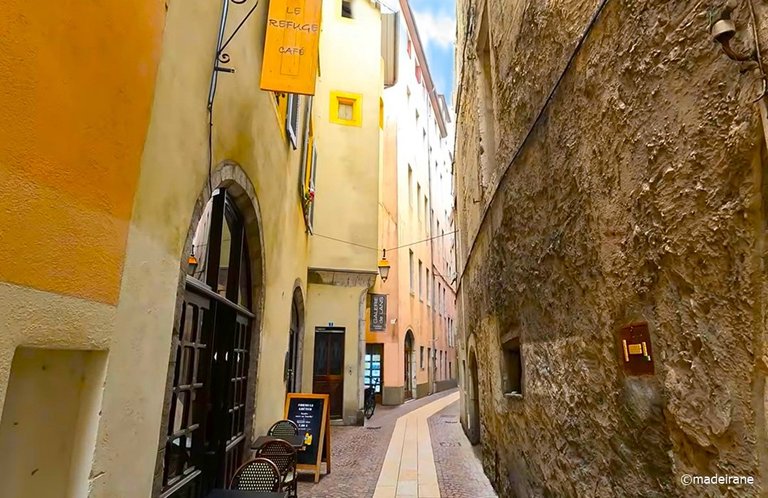
I really enjoyed diving into these passages, after which you find yourself two blocks away from the starting point. And there are many of them, and they are the highlight of Chambéry. All are open, tourists do not bother anyone.
A leisurely stroll through Chambéry left only pleasant memories and excellent impressions. It's a good place. Warm, cozy. Soulful and with good energy!
[//]:# (!worldmappin 45.56646 lat 5.92377 long Chambery (France, Savoie) - Cute Town In The Mountains, A City Of Contrasts d3scr)
💝💝💝💝💝💝💝💝💝💝
With love, @madeirane
Photos are taken by me.
© 2024
Translated from Lithuanian with DeepL.com (free version)
Praėjusį savaitgalį tvarkiau nuotraukas kompiuteryje ir radau nemažai aplankų su kelionės nuotraukomis. Ir gaila išmesti, ir atrodo, kad tai nereikalinga informacija, nes yra daug nuotraukų, kurios buvo fotografuotos, nes yra tiesiog gražios, bet jose nėra mano šeimos atstovų, todėl kyla klausimas, ar verta jomis apkrauti kompiuterio saugyklą. Todėl paprasčiausia tiesiog aprašyti tas keliones, paskelbti gražiausias nuotraukas, o visas kitas tiesiog ištrinti.
Taigi, kelionė autobusu į Savoją, Prancūziją. Šiandien - apie Šamberi miestą. Mano mylima Prancūzija, kurią myliu visomis jos apraiškomis. Esu tiek daug apie ją rašiusi ir daug kartų joje buvusi, bet jaučiu nepakeliamą norą vėl ją aplankyti ir nueiti ten, kur mano koja dar nebuvo įžengusi ir net ten, kur aš jau buvau įžengusi. Šioje šalyje yra miestų, kurie labai įsimintini ir į kuriuos noriu sugrįžti.
Žinoma, Provansas visada yra mano mėgstamiausias, bet niekada nepamirštu ir kalnų. Jau daug rašiau apie Provansą, bet niekada nerašiau apie Savojos kalnų regioną, apie pilis, miestus ir nuostabias ekskursijas. Manau, visi yra girdėję apie Chambéry miestą, nes čia pat yra slidinėjimo kurortai.
Reikia pripažinti, kad kalnuose įsikūrę miestai turi savito žavesio. Pavyzdžiui, Grenoblio miestas. Miestas, kuris neturi ypatingų lankytinų vietų, kuriame gyvena daug studentų, kuris yra mokslo centras - vis dėlto šis miestas yra labai įdomus. O štai Ansi miestas, tokie nuostabūs vaizdai į ežerą ir kalnus, ir pats miestas labai gražus, tokia prancūziška Venecija kalnuose.
O dabar į mano mėgstamiausių miestų sąrašą įtrauktas ir Šamberi miestas, apie kurį kalbėsiu šiandien. Žinoma, iš visų kalnuose esančių miestų atsiveria graži panorama, o jei gerai įsižiūrėsite, pamatysite kalnus bet kurio miesto fone.
Šamberi vietiniai gyventojai iki šiol meiliai vadina „Alpių kryžkele“, nes būtent šiame mieste susikirsdavo senoviniai prekybos keliai iš Italijos, Prancūzijos, Burgundijos ir Šveicarijos. Dėl to miestas visada klestėjo ir augo.
Šiandien Šamberi gyvena daugiau nei 60 000 žmonių, todėl jo negalima vadinti mažu. Miestas turi savo universitetą, todėl čia taip pat yra daug studentų. Taip pat turi savo oro uostą, kuriuo gali pasigirti ne kiekvienas kalnų miestas. Apskritai, kai keliauju po Prancūziją, mane apima visiškas šios tautos „keliautojų“ jausmas. Laisvomis dienomis jie nuolat keliauja į kaimyninius miestus, kur vyksta kokie nors renginiai.
Žinoma, viena vertus, labai neįprasta mažame miestelyje matyti tiek daug žmonių. Kita vertus, buvo įdomu stebėti miesto, kuriame atidarytas turgus, gyvenimą. Buvo įdomu stebėti prancūzus ir tai, kaip jie parduoda daug nereikalingų daiktų. Tačiau buvo gaila, kad ši minia neleido mums pilnai pasigrožėti šio miesto grožiu. O miestas tikrai gražus.
Šamberi istorija glaudžiai susijusi su Savojos kunigaikštyste, nes kadaise tai buvo pagrindinis jų miestas. Ir šiandien Šamberi yra pagrindinis Savojos miestas. Pirmoji žmonių gyvenvietė šioje vietoje atsirado neolito laikais, o romėnų laikais čia jau buvo miestas. Vis dėlto tikroji šio miesto istorija prasideda viduramžiais, kai Savojos kunigaikštystė nesutiko būti Prancūzijos dalimi ir dėl teritorijos vyko neįveikiama kova. Todėl miestas ne kartą keitė šeimininkus iš Savojos į Prancūziją ir atgal. Ir net italai sugebėjo užkariauti šį miestą. Bet čia nesileisiu į detales.
Tiesiog noriu parodyti jums šį gražų miestą kalnuose. O tai viena iš pagrindinių miesto įžymybių - fontanas su drambliais. Beje, kai jis buvo pastatytas, vietiniai gyventojai ilgai iš jo juokėsi. Tačiau šiandien jis jau yra miesto vizitinė kortelė.
Tai graži kolonos su fontanu ir keliomis skulptūromis kompozicija. Drambliai išdėstyti tradicinio savojietiško kryžiaus forma, o iš tikrųjų jie turi tik priekines kūno dalis, dėl to savojiečiai šį kompleksą vadina „keturiais be užpakalių“.
Grafas de Boigne taip pat aktyviai prisidėjo prie to, kad senieji Šamberi kvartalai įgautų patrauklią išvaizdą. Visų pirma buvo nutiesta ši labai graži tiesi gatvė, kuri dabar vadinasi jo vardu, jungianti Dramblių aikštę su Savojos kunigaikščių pilimi, pastatytas teatras ir kt.
Kadangi miestas daug kartų keitė savo priklausomybę, pereidamas iš rankų į rankas tarp italų, ispanų, prancūzų, tai atsispindėjo ir architektūroje. Net ir dabar Šamberi labai stipriai jaučiama Italijos įtaka. Siauros, vingiuotos senamiesčio gatvelės staiga atsiveria į erdvias stačiakampes aikštes. Senamiestis daro labai stiprų įspūdį.
Dar viena miesto įžymybė - Savojos grafų pilis, iškilusi XIV a. Ji buvo kelis kartus perstatyta. Tai pastatas su daugybe bokštų, kiemų, praėjimų. Dabar dalį pilies užima vietos valdžios institucijos. Pilis taip įsiterpusi į miesto kraštovaizdį, tiksliau, miestas taip glaudžiai apglėbė pilį, kad ją sunku nufotografuoti.
Pilies teritorijoje stovi XV a. pradžioje pastatyta Sainte-Chapelle bažnyčia. Po didelio gaisro Sainte-Chapelle ilgą laiką buvo uždaryta restauruoti. Viduje galima pamatyti nuostabius XVI a. vitražus.
„Jei yra miestas, kuriame galima pajusti gyvenimo švelnumą, kuriame vyksta maloni ir patikrinta prekyba, tai Šamberi“, - sakė Žanas Žakas Ruso, čia praleidęs daugiau nei 10 savo gyvenimo metų ir čia parašęs savo bestselerį - romaną laiškais ‚Žiuli, arba Naujoji Heloiza‘. Romanas buvo skirtas jo globėjai ir meilužei Luizai Eleonorai de Warens, su kuria jis kelerius metus gyveno Šamberi pakraštyje, Šarmeto dvare, kur dabar yra jo namas-muziejus.
Nedideliame J. J. Rousseau parke pastatytas paminklas, o madam de Warens palaidota čia, vietos kapinėse. Tiesą sakant, J. J. Rousseau Šamberi į mus žvelgia iš visur - nuo sienų, gatvių reklaminių stendų, spausdintų leidinių viršelių ir t. t.
Šamberi kažkokiu neįtikėtinu būdu, visiškoje harmonijoje, sugyvena ir išoriškai apleisti namai, ir ryškūs, žaismingi pastatai, ir ištisos gatvės, nepaliestos restauratoriaus rankos, ir gatvės su butikais bei restoranais. Viduramžiai čia taikiai sugyvena su Chambéry renesansu, XIX a., grafo de Boigne'o laikais. Mielas, šlovingas miestelis!!!
Man labai patiko pasinerti į šiuos tunelius, po kurių atsiduri už dviejų kvartalų nuo pradinio taško. O jų yra daug, ir jie yra Šamberi įžymybė. Visi jie atviri, turistai niekam netrukdo.
Neskubus pasivaikščiojimas po Chambéry paliko tik malonius prisiminimus ir puikius įspūdžius. Tai gera vieta. Šilta, jauki. Dvasinga ir su gera energija!
You can check out this post and your own profile on the map. Be part of the Worldmappin Community and join our Discord Channel to get in touch with other travelers, ask questions or just be updated on our latest features.
The city is really very beautiful, the buildings are very amazing with very beautiful decorations I really like it ❤️
Sending you an Ecency curation vote!

Great shots, lovely places. And to think there are people out there claiming European cities are ugly. 🤣